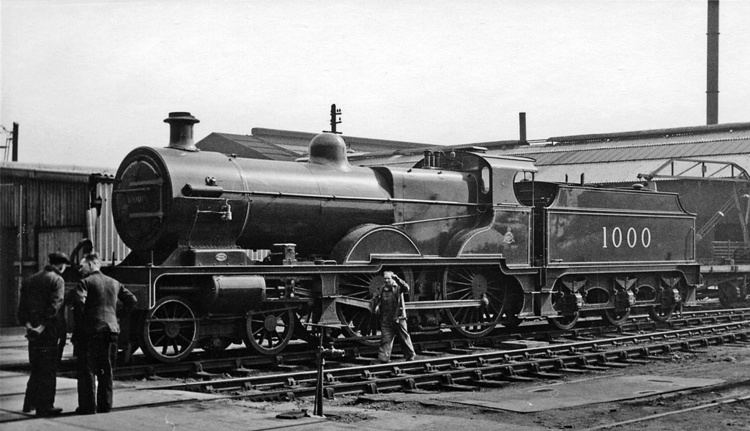Power type Steam Build date 1902–1909 Rebuild date 1913–1928 | Total produced 45 | |
 | ||
Designer | ||
Midland Railway 1000 Class is a class of 4-4-0 steam locomotive designed for passenger work.
Contents
Overview
These were developed from a series of five locomotives (2631–2635), introduced in 1902 by Samuel W. Johnson, which had had a 3-cylinder compound arrangement on the Smith system. This had a layout of one high-pressure cylinder inside the frames, and two low-pressure cylinders outside, and utilised Smith's starting arrangement. On the first two locomotives, independent control of high-pressure and low-pressure valve gears was available. From 1905 onwards, Johnson's successor Richard Deeley built an enlarged and simplified version, eliminating all the Smith refinements whilst fitting his own starting arrangement, making the engines simpler to drive. These locomotives were originally numbered 1000–1029, but in the 1907 renumbering scheme the five Smith/Johnson locomotives became 1000–1004 and the Deeley compounds 1005–1034, ten more of these being added in 1908–1909. The original Johnson locomotives were all subsequently renewed as Deeley compounds, including the now-preserved 1000 which was rebuilt and outshopped with a superheater in 1914.
Numbered 1000–1044 by both the Midland and LMS companies, British Railways renumbered the Midland series of compounds 41000–41044 after nationalisation in 1948.
Accidents and incidents
Preservation
No. 1000 was set aside for preservation after withdrawal and restored in 1959 close to its 1914 condition, painted in Midland maroon livery, running enthusiasts' specials until placed in the temporary Clapham Transport museum. Though steamed since preservation, it is currently a static exhibit at the Barrow Hill Engine Shed at Derbyshire, having been lent by the National Railway Museum in York.
For terminology, see Steam locomotive components
LMS compound locomotives
After the grouping, the LMS continued to build slightly modified MR Compounds as the LMS Compound 4-4-0
